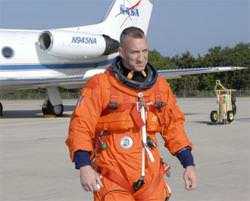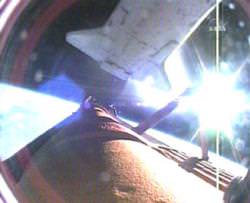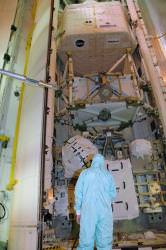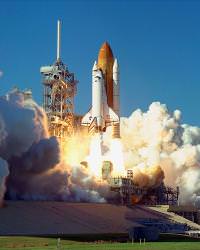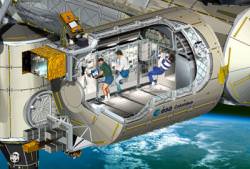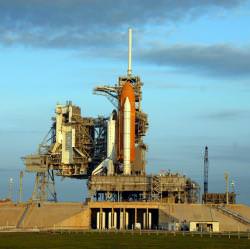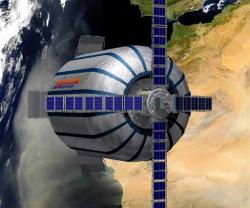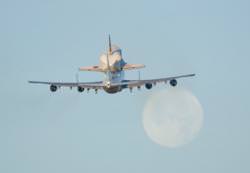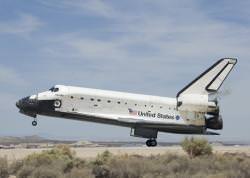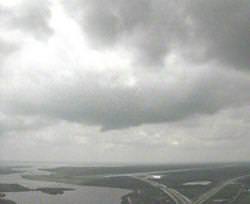Weather in Florida this time of year can be dramatic. Thunderstorms, rain and lightning can appear at any time – and that’s not good for launching space shuttles. Fortunately, a heat wave has swept across the area around Cape Canaveral, holding off the typical thunderstorm conditions, and improving Endeavour‘s chances for blasting off on Wednesday.
If all goes well, Endeavour will lift off from Pad 39A on Wednesday, August 8th at 2236 UTC (6:36 pm EDT), beginning mission STS-118 to continue the construction of the International Space Station. Endeavour is carrying supplies, spare parts, experiments, and a new starboard-side truss element that will be bolted onto the station’s backbone-like main truss.
Endeavour will have the usual 7-crew compliment, led by veteran astronaut Scott Kelly. Also on board will be teacher Barbara Morgan. If you recall back to the space shuttle Challenger disaster in 1986, one of the crew members of that ill-fated mission was Christa McAuliffe. Barbara Morgan was her backup. Now 22 years after the disaster, NASA is ready to continue its “Teachers in Space” program.
As I mentioned, weather in this area can get nasty this time of year. But NASA’s official weather officer, Kathy Winters raised Endeavour‘s chances of an on-time launch to 80 percent. The drier air and hot temperatures causing a heat wave in Florida is good news for the shuttle.
Because of the good weather, controllers will retract the Rotating Service Structure that’s protecting the shuttle from bad weather tonight. And then they’ll begin filling up the external fuel tank with liquid oxygen and hydrogen tomorrow morning.
Original Source:NASA Shuttle

